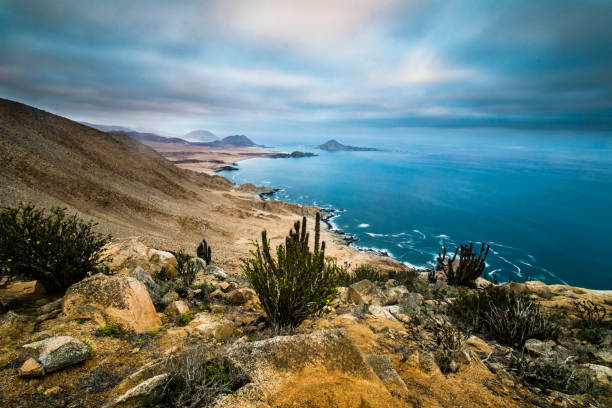
Stargazing Adventures: Astronomy Open Nights in Taltal’s Clear Skies
Experience the stark beauty of Chile’s Atacama Desert nights at Taltal’s local observatories. Astronomy Open Nights here combine clear skies, expert guidance, and practical access for an unforgettable encounter with the cosmos.
Dress in Layers for Desert Nights
Temperatures drop sharply after sunset. Wear thermal base layers and a windproof jacket to stay comfortable through the evening.
Stay Hydrated Despite Cool Air
Dry desert air dehydrates quickly after dark. Carry water and sip regularly even if you don’t feel thirsty.
Wear Sturdy Footwear
Paths around observatories are gravel and uneven. Good boots or shoes with grip reduce fatigue and slipping risks.
Arrive Early to Adjust Your Eyes
Give your vision 20-30 minutes to adapt to darkness before observing. Avoid bright lights and phone screens during this time.
Stargazing Adventures: Astronomy Open Nights in Taltal’s Clear Skies
The desert air in Taltal grips with a chill that sharpens every breath and stokes anticipation. As night descends, the local observatories flick on their instruments, inviting visitors to step beyond the veil of daylight and witness stars fiercely themselves in the vast expanse above. Astronomy Open Nights here offer more than just a look through a telescope — they are an encounter with a celestial wilderness that demands respect and curiosity.
Located within easy reach of Antofagasta, Taltal’s observatories sit against a backdrop of barren hills that guard the region’s famously clear skies. The journey to these facilities typically involves a short drive from town followed by a gravel path that tests tires but rewards with unspoiled views. The air is dry, the wind steady, and the horizon endless — earthly distractions give way to the universe’s pulse.
Each session spans roughly three hours, beginning just after dark when stars pierce the sky in sharp clusters. The observatories provide powerful optics tuned to reveal not only the familiar constellations but distant galaxies, nebulae, and planets gliding silently through the void. Guides speak plainly, sharing practical insights on tracking objects and reading the sky’s subtle signs, making the experience accessible to first-timers and seasoned stargazers alike.
Timing your visit is key. Unlike hikes where the terrain dictates pace, here the celestial clock is your guide. Start by arriving early enough to acclimate your eyesight and capture the horizon’s fading light. Layers are essential; nighttime temperatures dip quickly and desert winds can cut sharply. Comfortable, sturdy footwear is advised for walking the uneven paths around the observatory grounds.
Hydration matters, too. Even as darkness falls, the dry air pulls moisture relentlessly. Bring water, keep moving between observation points to stay warm, and prepare to take it slow when focusing on the heavens. The open nights blend science and adventure — a chance to engage with a world beyond the earth’s pull while navigating a landscape that is as demanding as it is rewarding.
For those weighing if the journey is worth it: the gratification of spotting Saturn’s rings or tracing Orion’s belt with your own eyes outweighs the practical challenges. Respect the environment, come prepared, and you’ll share the night with stars older than human memory, fiercely themselves, and welcoming your gaze.
Nearby Trips
All Adventures
Boat Charters
Water Activities
Adventures near Taltal, Antofagasta
Discover the unique and memorable adventures that make Taltal, Antofagasta special.
Frequently Asked Questions
What makes Taltal’s skies ideal for astronomy?
The region benefits from high altitude, low humidity, minimal light pollution, and stable atmospheric conditions, providing exceptionally clear night skies nearly year-round.
Are the Astronomy Open Nights suitable for children or beginners?
Yes. The guides provide clear explanations and equipment demonstrations, making the experience accessible and engaging for all ages and experience levels.
How do I get to the observatories from Taltal town?
Most observatories are reached by a 15-20 minute drive on paved and gravel roads, followed by short walks. Public transport is limited, so arranging private transport or tours is advisable.
Can I bring my own telescope or camera equipment?
Personal equipment is often welcome but check with the observatory in advance. Many provide telescopes and advise on photography settings for capturing star fields.
What wildlife might be seen during an Astronomy Open Night?
Nocturnal desert animals like small rodents or owls may be observed near the observatory grounds. Listening to the night sounds adds depth to the stargazing experience.
Are there any environmental considerations to keep in mind?
Protecting the delicate desert environment is crucial. Visitors should stick to established paths, minimize light pollution by using red lights, and carry out all trash.
Recommended Gear
Warm Layered Clothing
Protect against cooling desert temperatures at night by layering thermal and windproof clothing.
Flashlight with Red Filter
Use a red light to navigate paths without disrupting night vision or disturbing others.
Sturdy Hiking Shoes
Good traction is necessary for walking on uneven, gravelly observatory grounds.
Reusable Water Bottle
Maintaining hydration in dry desert air is essential, even when temperatures drop.
Local Insights
Hidden Gems
- "Punta Taltal viewpoint nearby offers expansive views of the Pacific coastline and rare desert flora."
- "Small local archaeological sites scattered around the outskirts provide context to the region’s cultural history."
Wildlife
- "Chinchillas in rocky areas"
- "Nocturnal birds such as the Patagonian crested duck"
- "Small desert foxes that emerge near twilight"
History
"Taltal was once a booming nitrate mining town with a rich maritime heritage; many of its historic buildings still reflect early 20th-century mining prosperity."
